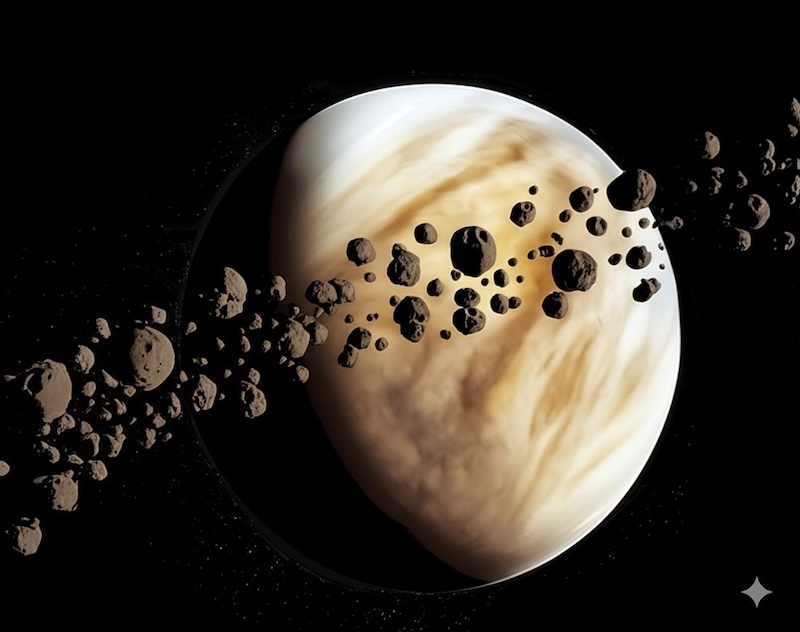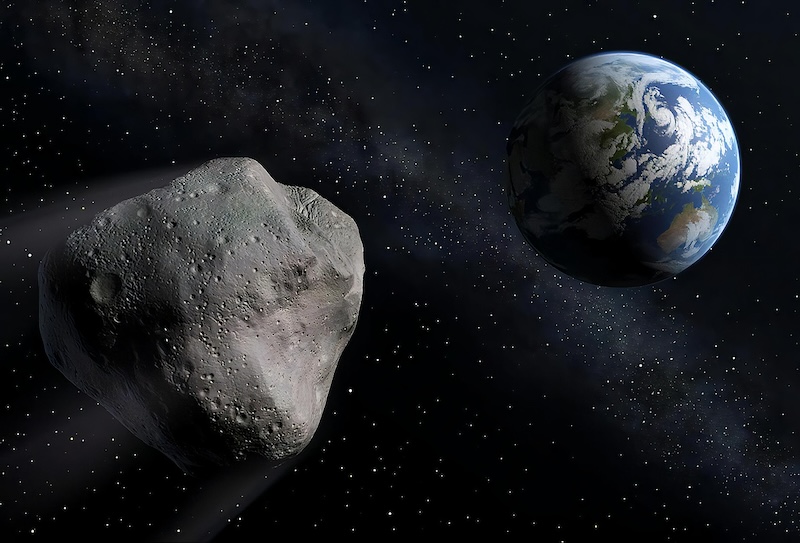Now Reading: ‘Invisible’ asteroids near Venus: A new danger to Earth?
-
01
‘Invisible’ asteroids near Venus: A new danger to Earth?
‘Invisible’ asteroids near Venus: A new danger to Earth?


- Near-Earth asteroids have orbits that can bring them close to Earth. Are there more of them than we thought?
- There are likely many “invisible” asteroids that share Venus’ orbit. These are asteroids that are very difficult to detect with our current telescopes.
- Some of them could come dangerously close to Earth and cause catastrophic damage if they actually hit our planet.
Invisible asteroids near Venus: A new danger to Earth?
Astronomers across the globe are dedicated to identifying the near-Earth asteroids that could one day impact our planet. But there might be a group of potentially dangerous nearby asteroids that have remained invisible to astronomers so far.
On September 24, 2025, an international team of researchers at the São Paulo State University (UNESP) in Brazil said that a group of asteroids sharing Venus’ orbit could have remained undetected so far due to their location in the sky. And they could pose a threat to Earth within a few thousand years.
There are currently 20 known co-orbital asteroids near Venus. These orbit the sun, but share the same orbital region as Venus. Their orbits, however, are eccentric (oval-shaped) enough that they pass far enough from the sun for astronomers to spot them. But the new study suggests there are many more with less eccentric – more perfectly circular – orbits that are much more difficult to find.
The researchers published their peer-reviewed results in Astronomy & Astrophysics on June 30, 2025.
Co-orbital invisible asteroids near Venus
Orbital eccentricity is the amount by which the orbit of an object around another body deviates from a perfect circle. A perfectly circular orbit has a value of 0. The 20 known co-orbital asteroids near Venus all have eccentricities over 0.38. This elongation of their paths makes them easy to detect with telescopes. Asteroids with lower eccentricities, however – the proposed invisible asteroids – remain closer to circular orbits. That makes them more difficult to detect when close to the sun in the sky.
The co-orbital asteroids near Venus are also in a 1:1 resonance with Venus. This means they complete an orbit around the sun in the same time as Venus completes an orbit.
And these orbits are unstable. They switch onto different orbits in cycles of about 12,000 years. That makes them more dangerous. As they transition between orbits, they could switch from being close to Venus to being perilously close to Earth.
Hard-to-spot asteroids hiding near Venus could threaten Earth #EarthDotCom #EarthSnap #Earth
Many unseen asteroids
The new study suggests there are lots of less eccentric asteroids sharing Venus’ orbit. They should be there, but current telescopes can’t easily detect them. Hence they remain invisible to astronomers.
Astronomer Valerio Carruba, at the São Paulo State University (UNESP) School of Engineering at the Guaratinguetá campus (FEG-UNESP) in Brazil, and lead author of the study, said:
Our study shows that there’s a population of potentially dangerous asteroids that we can’t detect with current telescopes. These objects orbit the sun, but aren’t part of the asteroid belt, located between Mars and Jupiter. Instead, they’re much closer, in resonance with Venus. But they’re so difficult to observe that they remain invisible, even though they may pose a real risk of collision with our planet in the distant future.
Computer models show that there should actually be a larger population of the less eccentric asteroids than the eccentric ones. They’re more difficult to see, but that doesn’t mean they don’t exist. Carruba said:
The absence of objects with an eccentricity of less than 0.38 is clearly the result of an observational bias.

An invisible threat to Earth?
Using the Vera C. Rubin Observatory in Chile, the researchers ran simulations to determine how dangerous these unseen asteroids might be. They found that some of them could indeed come perilously close to Earth. And if one did hit, it could be devastating, as Carruba noted:
Asteroids about 300 meters (984 feet) in diameter, which could form craters 3 to 4.5 kilometers (1.9 to 2.8 miles) wide and release energy equivalent to hundreds of megatons, may be hidden in this population. An impact in a densely populated area would cause large-scale devastation.
And even using Rubin, the detectability of the asteroids would be limited. The brightest ones would only be visible for one to two weeks, and only if they were above 20 degrees on the horizon. Plus, there are long periods of time when even those ones wouldn’t be detectable at all. Carruba said:
Such asteroids can remain invisible for months or years and appear for only a few days under very specific conditions. This makes them effectively undetectable with Vera Rubin’s regular programs.

A better way to detect invisible asteroids
Is there a better way that astronomers could find these asteroids? The researchers suggest using space telescopes that focus on regions closer to the sun. These could include NASA’s future NEO Surveyor and China’s proposed CROWN mission. NEO Surveyor is scheduled to launch no earlier than September 2027. CROWN would fly past the asteroid Apophis when it comes near Earth in 2029.
In particular, telescopes in Venus-orbiting positions could more easily detect the invisible asteroids. And as Carubba noted:
Planetary defense needs to consider not only what we can see, but also what we can’t yet see.
Bottom line: New research shows there are likely many ‘invisible’ asteroids that share the same orbit as Venus. They could potentially pose a danger to Earth.
Read more: We’re getting better at seeing asteroids that may hit Earth
Read more: Webb finds smallest asteroids yet in the asteroid belt
The post ‘Invisible’ asteroids near Venus: A new danger to Earth? first appeared on EarthSky.
Stay Informed With the Latest & Most Important News
Previous Post
Next Post
-
 012024 in Review: Highlights from NASA in Silicon Valley
012024 in Review: Highlights from NASA in Silicon Valley -
 02Panasonic Leica Summilux DG 15mm f/1.7 ASPH review
02Panasonic Leica Summilux DG 15mm f/1.7 ASPH review -
 03How New NASA, India Earth Satellite NISAR Will See Earth
03How New NASA, India Earth Satellite NISAR Will See Earth -
 04And Thus Begins A New Year For Life On Earth
04And Thus Begins A New Year For Life On Earth -
 05Astronomy Activation Ambassadors: A New Era
05Astronomy Activation Ambassadors: A New Era -
06SpaceX launch surge helps set new global launch record in 2024
-
 07Space Force plans new ‘Futures Command’ amid pressure to speed up modernization
07Space Force plans new ‘Futures Command’ amid pressure to speed up modernization




















